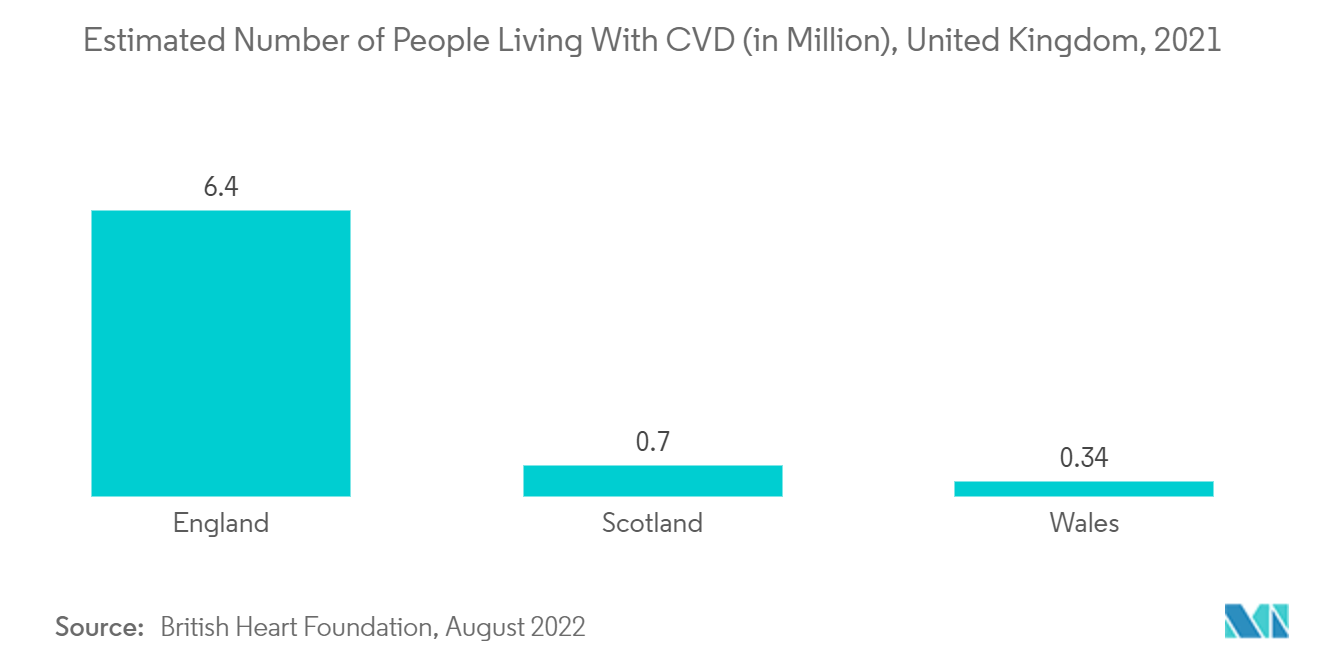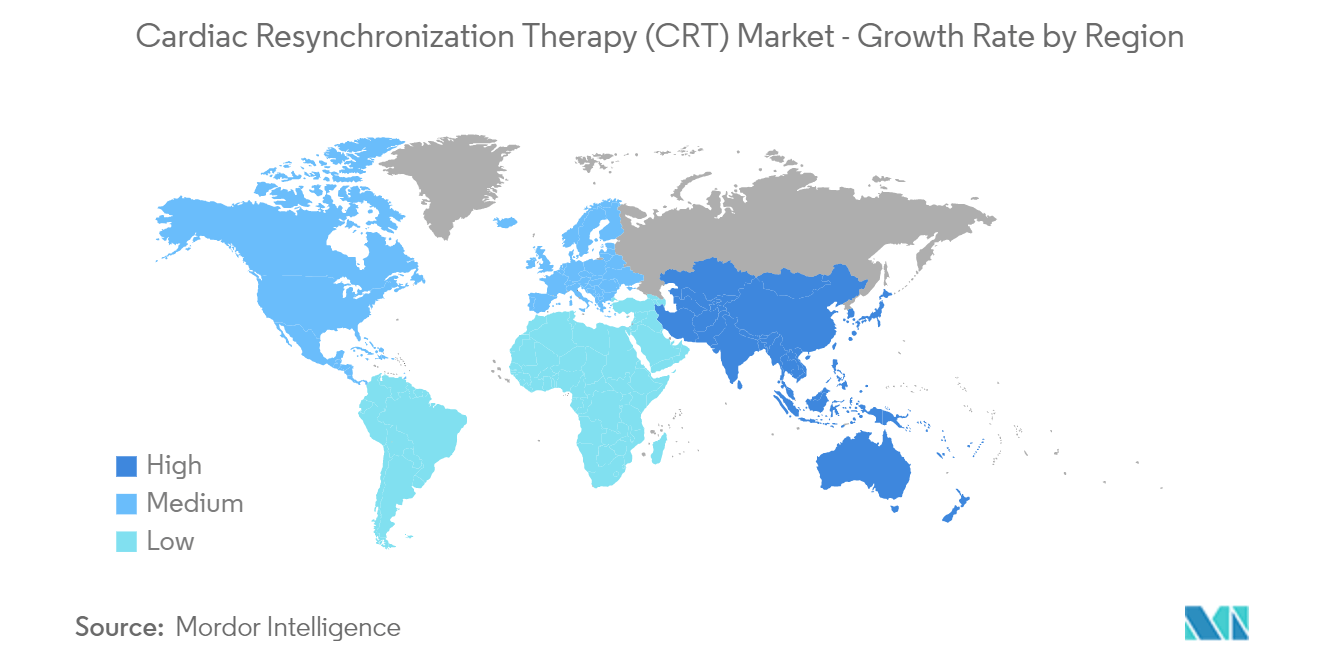Market Trends of Cardiac Resynchronization Therapy (CRT) Industry
This section covers the major market trends shaping the Cardiac Resynchronization Therapy Market according to our research experts:
CRT - Defibrillators Segment is Expected to Hold a Significant Share Over the Forecast Period
The CRT - Defibrillators (CRT-D) are special devices for heart failure patients who are also at high risk for sudden cardiac death. While functioning like a normal pacemaker to treat slow heart rhythms, a CRT-D device also delivers small electrical impulses to the left and right ventricles to help them contract at the same time. CRT Defibrillators (CRT-D) segment is anticipated to hold a significant share of the market due to the rise in cardiac complications, the increase in the geriatric population, and technological advancements in CRT Defibrillators. For instance, according to the Government of the UK, Office of Health Improvement & Disparities, in 2020-21 the admission rate for chronic heart disease in NHS Barking and Dagenham CCG was 427.9 for every 100,000 people in the population (580 admissions). This is significantly higher than the England rate (368 per 100,000). Thus, the rise in cardiovascular complications increases the demand for CRT - Defibrillators thereby driving the market growth over the forecast period.
Arrhythmias, which are excessively quick heartbeats that might cause a cardiac arrest, can also be treated with a CRT-D device. If the device senses heartbeats that are dangerously fast, it delivers a shock to the heart. This shock (defibrillation) stops the abnormal rhythm. Without this life-saving therapy, the dangerously rapid rhythm could lead to death in just minutes. At the same time, launches and developments of products are further propelling the market growth. For instance, as per the article published in March 2022 in ScienceDirect, placement of a CRT defibrillator (CRT-D) with an implantable cardioverter defibrillator (ICD) was associated with significantly reduced mortality compared with CRT pacemaker placement.
Furthermore, an increase in clinical studies to assess the efficiency of CRT defibrillators is anticipated to boost the demand for the segment over the forecast period. For instance, in September 2022, Bayer sponsored a clinical trial to evaluate how safe BAY2413555 is compared to a placebo in participants with chronic heart failure and implanted cardiac defibrillator, or cardiac resynchronization devices (ICD/CRT). Thus, CRT defibrillator-related studies demonstrate the efficiency of the device compared to others and increase the demand over the study period.
Thus, due to the increase in heart failure and cardiac disorders and an increase in the geriatric population, and a rise in research in CRT Defibrillators (CRT-D, the studied segment is anticipated to witness significant growth over the forecast period.

North America is Expected to Hold a Significant Market Share Over the Forecast Period
North America is anticipated to hold a significant share of the studied market owing to the increase in cardiovascular diseases, and favorable government policies. For instance, as per the Spotlight on Heart Failure 2022 report, more than 100,000 Canadians are diagnosed with heart failure each year. Similarly, as per the American Heart Association 2021 journal, it is estimated that by the year 2035, more than 130 million adults in the United States will have some type of heart disease. Thus, an increase in the prevalence of cardiovascular diseases is likely to drive the demand for CRT and promote market growth.
New product approvals, clinical studies, and launches by the prominent players operating in the market are anticipated to further boost the market's growth in the region. For instance, in April 2022, the Heart Rhythm Society (HRS) released the findings of three clinical trials demonstrating positive outcomes of conduction system pacing (CSP) for patients in need of cardiac resynchronization therapy (CRT). The studies were presented as late-breaking clinical science during Heart Rhythm 2022. Hence, due to the rise in cardiovascular diseases and the increase in cardiac implant product launches, North America is expected to witness significant growth in the market over the forecast period. Furthermore, in October 2021, Boston Scientific Corporation consented to purchase Baylis Medical Company, Inc. This acquisition esteemed at USD 1.76 billion, extended its primary heart and electrophysiology portfolios. Moreover, in April 2021, a researcher from Geisinger Clinic initiated a clinical study to evaluate the overall rate of successful His-Purkinje conduction system pacing Optimized Trial of Cardiac Resynchronization Therapy (HOT-CRT) versus biventricular pacing using coronary sinus lead (BVP) to compare acute and mid-term outcomes. Thus, such developments demonstrating the advantages of CRT therapy are expected to drive the market growth over the forecast period.
Hence, due to the increase in cardiac disorders and the rise in advancements of CRT, North America is anticipated to witness growth in the market over the forecast period.

